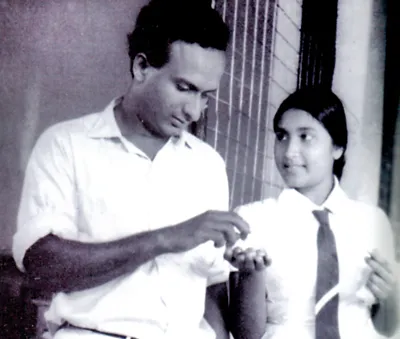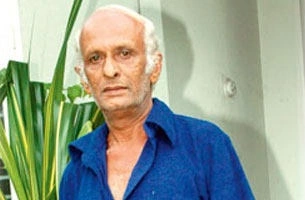WICKRAMA BOGODA UNASSUMING SENSATIONAL ACTOR ON STAGE AND CINEMA REMINISCEND – by Sunil Thenabadu
Photos Source : apekattiya
 Bogoda Appuhamilage Don Wickrama Bogoda born on June 16, 1940 died on January 15, 2013, traditionally known as Wickrama Bogoda, was an actor cinema and but more predominantly in theatre. Principally known for fictitious character acting in both in stage plays and movies. Plays. Bogoda has performed in many theatre plays , over 15 chosen movies over two decades from 1960 to 1985. His role in Movie Golu Hadawatha made known for his sensational portrayal.
Bogoda Appuhamilage Don Wickrama Bogoda born on June 16, 1940 died on January 15, 2013, traditionally known as Wickrama Bogoda, was an actor cinema and but more predominantly in theatre. Principally known for fictitious character acting in both in stage plays and movies. Plays. Bogoda has performed in many theatre plays , over 15 chosen movies over two decades from 1960 to 1985. His role in Movie Golu Hadawatha made known for his sensational portrayal.
Bogoda was born on June 16, 1940 to a middle-class family unit during the pre-war years. His father worked in the CEB his mother was a school teacher. In a family of three children, he was the eldest, with one brother and two sisters. Bogoda studied at Dharmapala Vidyalaya, Pannipitiya . He never has had any fondness to be an actor and did not have an environment at home or any inspiration for acting. During the school life, being a sports enthusiast, but was a member of the school’s Army Cadet team. His father encouraged him to concentrate on studies and gain an opportunity for a respectable government job. As a result of his father’s claim, after the Higher School Certificate (HSC) examination, Bogoda joined the prestigious Bank of Ceylon as a cashier. ( the writer had the privilege of working with him intimately).
In the 1960s, when he was about to leave the school, the principal of his school directed him to play a role in a school drama. During that time, “The Merchant of Venice was a trendy stage-drama and used in literature and theatre performance education. Bogoda played the character of Shylock,. It became registered as his first step for acting in a stage drama.
During his employment in the Bank of Ceylon, at the Foreign Department he met the Sri Lankan playwright and novelist Sugathapala de Silva who led the drama troupe ‘Apey Kattiya’, a group of young artists known for adapting stage plays in the early 1960s. Thereafter Bogoda became a close associate of Sugathapala De Silva and members of the drama group. The group included notable people such as ,Tony Ranasinghe and Simon Navagattegama who were undoubtedly the most noted young theatre artists and peers of Bogoda in the early 1960 decade. Their common meeting place was the Lion House restaurant and cafe in Bambalaitiya . Sugathapala de Silva wrote the stage-play Bodinkārayo which became a well-known stage-play in decade of 1960. De Silva invited Bogoda to play a character in Bodinkārayo. One day, Sugathapala De Silva invited Lester James Peiris to watch his stage-play. It was an unexpected opportunity for Bogoda, who at the time, was 21 years old. Dr Peries, noticing Bogoda’s latent talent, decided to give him a leading role in his then forthcoming film ‘Gamperaliya’ in year 1963.
 At the age of 21, Bogoda made his screen debut, under the direction of veteran film director Dr. Lester James Peiris, in the film Gamperiliya. The film, was based on a novel, written by veteran Sri Lankan novelist Martin Wickremsinghe in year 1944 and later story followed by two versions as Kaluyugaya and Yuganthaya. Lester James Peiris directed these movies based on these three novels. Bogoda has the continuous opportunity to act in these three movies as the character, Tissa was the youngest boy of a colonized and privileged family around on which the stories were integrated. Tissa symbolizes the changes and subsequent adoption to the modern era who becomes radicalized and discarding the old colonized, traditional, and cultural practices. Gamperaliya gave Bogoda a warm debut, since the film was shown internationally too, and the novels were popular literature of Sri Lanka.
At the age of 21, Bogoda made his screen debut, under the direction of veteran film director Dr. Lester James Peiris, in the film Gamperiliya. The film, was based on a novel, written by veteran Sri Lankan novelist Martin Wickremsinghe in year 1944 and later story followed by two versions as Kaluyugaya and Yuganthaya. Lester James Peiris directed these movies based on these three novels. Bogoda has the continuous opportunity to act in these three movies as the character, Tissa was the youngest boy of a colonized and privileged family around on which the stories were integrated. Tissa symbolizes the changes and subsequent adoption to the modern era who becomes radicalized and discarding the old colonized, traditional, and cultural practices. Gamperaliya gave Bogoda a warm debut, since the film was shown internationally too, and the novels were popular literature of Sri Lanka.
The movie Goluhadawatha gave Bogoda an opening to make an entrance into the movie field. Golu Hadawatha was also based on a popular romantic novel about a relationship between teenage boy and a girl studying in the same class of their school authored by Karunasena Jayalath w in year 1962 based on his school life experiences. Lester James Peiris directed the novel into a motion-picture in 1967 from an original script by Piyasiri Gunaratne with Reggie Siriwardena also working on the script.
Bogoda’s first major breakthrough came from his acting in Golu Hadawatha as Sugath his performance in this movie showed an outstanding skill of improvisation.This flm theoretically inspired the passionate and love film genre in Sri Lanka in the 1960s. Apart from its cinematic format and screen-presentation style, it heavily designed on the characterization and portrayal of the main two characters of Sugath and Dhammi, which were of course fictitious characters. According to broadly discussed cinema concepts, Bogoda’s characterization of Sugath, tinged with traits explained in Stanislavski’s system to portray acting; Bogoda had accosted Sugath from his persona, with a deeper immersion of expressions than appearing as Sugath. He has intensively used his physical and mental participation to make the fictional character come alive before an audience, who had read about the ‘defeated lover’, in the novel. The characterization of Sugath contained a broader range of sensitive expressions and attributes throughout the movie to portray the personae of the defeated lover and how he reacted to his relationship with his girlfriend. Concurrently, he has used the acting styles defined in the Meisner Technique. In the point of Meisner Acting Technique, Bogoda has given a major support to the characterization of Dhammi . In the relationship between Dhammi and Sugath, Dhammi is predominant and regulator of the affiliation, and Sugath is flexible/adaptable to her actions. According to Meisner Technique of Acting, Bogoda demonstrated this compliance throughout role of Sugath. Bogoda strongly characterized Sugath than acting as Sugath which made a popular Character of “true defeated lover” among movie enthusiasts. In many of his later roles in the movies followed by Golu Hadawatha he chose to characterize portrayals..
Being a man with a calm and soft characteristic in real life cycle, Bogoda maintained his own interpretation and judgments over his acting career. As his contemporaries in the cinema and journalism reveal, Bogoda did not like to act every character, based on acting. He did not like to accept all the offers that not matching his instinctual impetus. He judiciously selected his characters based on the story and type of character assigned to him and he preferred neutral but influencing roles—the role that has a crucial impact on the story of the movie rather than the character itself. Over 20 years long career in Cinema and Theatre (1960-1985), he contributed over 20 stage-plays and over 15 movies. The hallmark of his acting was the character of Sugath in Golu Hadawatha. His acting career ended in 1985 after Kaliyugaya, the 3rd episode of the Gamperaliya saga. By this time the cinema and theatre has notably declined in Sri Lanka and Bogoda was one of the early retired actors. His last public appearance was in a Tele-drama series as a senior adult.
Following his retirement from the Bank of Ceylon and his acting career, he lived a personal life, while attending his personal business. Bogoda maintained a notable space between his acting career, personal and family life. As his contemporaries mentioned, he never sought gratuitous publicity for his acting life. He had his own set of hobbies; Bogoda was a good-reader and was fond of literature of varying genres. Being an environmental enthusiast, he neatly maintained his home-garden and engaged in the fruits of cultivation. He is a self-contained man who had his own business to take care of and was never dependent on cinema. In the final years of his life, Bogoda had been suffering from liver disease. Bogoda died on 15 January 2013 at his home. Upon his last-will, the remains of his physique /remains were handed over to the Sri Lanka Medical Colleges, for educational purposes.
Golu Hadawatha, both the novel and movie became a romantic and love symbol among the young generation in the late 1960’s in Sri Lanka. Characters of Sugath and Dhammi turned to model examples for a sacrificed love. Bogoda was one of the most popular actors in the late 1960s; especially his contribution as Sugath to Golu Hadawatha earned him that popularity and he became popular as Sugath. He earned respect among professional cinema artists for his memorable performances and charismatic screen presence. That gave an accurate characterization to Sugath that was a complex fictitious character in the novel. In the popular-cinema culture during the late 60s, the then young generation acclaimed Sugath as a role-model of a true lover. He received the sympathy of both men and women for being “booted” by his girlfriend Dhammi.
Sugath and Dhammi belong to a tradition of tragic romance and love stretching back to the past in the memories of the movie buffs in Sri Lanka in the early 60s. Their story is viewed in the context of romance, love, and attachment which ended in pathos. In the late 60s, the story touched with the Rama-Seetha, Jaliya-Krishna, or Romeo-Juliet in the popular aesthetic and romance culture in the 60s and argument is based on the fact that Dhammi betrayed Sugath, while the idea stands though they were apart from each other, their love and attachment are permanent. Young men followed his characteristics fanatically and introduced them as “Sugath-type of lovers”. Over the years, the story of Sugath and Dhammi of Golu Hadwatha is broadly discussed in popular romance and love in the different genre of Literature, Music, Tele Drama, and Cinema. Today, the Golu Hadawatha has emerged with a new fame based on the social media networking—particularly on Facebook, personal or media blogs and YouTube. In popular culture today, Sugath’s character is being analyzed as a weak character fallen before his girlfriend, yet he is a genuine lover. The new young generation views Dhammi and Sugath story as an attachment that should not have an end of that nature. Today, the novel Golu Hadawatha is not much known among the young generation, but the movie has a popular reception over the YouTube, the young generation who view the movie explains it as a romantic Sinhala movie for all seasons of the romance and love genre and acclaimed Wickrama Bogoda has performed as real Sugath who shows vulnerability and frustrated in his attachment to Dhammi. Many youths who use Facebook, use “Golu Hadawatha” as a popular slogan to express their feelings in different terms pertinent to their relationships, expressions of thoughts
- 1960 Vānisiya Welendā , Merchant of the Venice
- 1961 Borading Kārayo
- 1963 Thattu Geval
- 1964 Harima Badu Hayak
- Akkara Paha
- Kaní Pālama
- Nattukakari
- Thuranga Sanniya
- Ranthodu
- Onna Babo Athinniya
- Thāthā
- Vahalak Nethi Geyak
May Wickrama Bogoda my close colleague at Bank of Ceylon attains supreme Bliss of Nibbana…
Sunil Thenabadu
e mail sthenabadu@hotmail.com
WhatsApp 0061444533242








